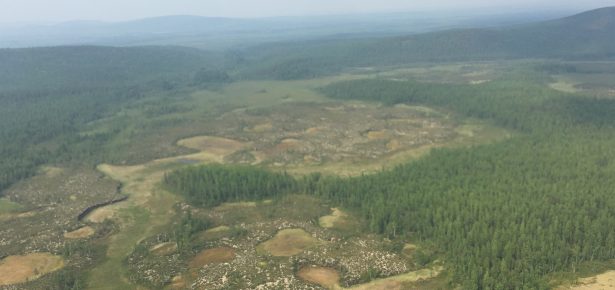
Every year June 30 marks International Asteroid Day. A United Nations resolution from 2016 declares that that holiday serves to mark “the anniversary of the Tunguska impact over Siberia, Russian Federation, on 30 June 1908 and to raise public awareness about the asteroid impact hazard.” Slick presentations, celebrity speakers, and numerous grassroots events occur worldwide with the aim of attracting greater attention and resources to the study of near-earth objects and the hazards that they pose. The hope is to help humanity develop possible systems to address a future impact before it is too late.
Put differently, the day is designed to assure that the doomsday scenario in the recent film Don’t Look Up never comes to fruition. The movie depicts an impending collision of a comet and the stultifying lack of seriousness of the world’s response in the face of impending planetary destruction. It dwells on the avarice of billionaire gurus leading technology companies, the know-nothing stupidities at all levels of American politics, and the co-optation of scientists trying to communicate to the public by a vapid, rapid, and putatively attention-seeking but really attention-destroying media. While the film is a parable for the need to act on the climate crisis, International Asteroid Day urges us to focus on other known risks from the sky.
The disaster commemorated on International Asteroid Day has its own elusive history. When the explosion occurred above a terrain in Central Siberia in 1908, few recognized its significance as the largest meteorite event in the modern era. Fear and rumors spread but the event was soon forgotten by all except those who suffered most directly. When sustained scientific research into the blast began in the late 1920s, the failure of investigators to locate a meteorite or a crater turned the Tunguska event into an international mystery.
Mystery has been as much a part of the Tunguska story as any clarion call it has offered to take otherworldly threats more seriously. The multifarious role of mystery in Tunguska’s past has appeared in the particular modes of landscape use it inspired on this patch of Siberian taiga, the interrogation of possible destructive agents from the cosmos, and the prominence of unconventional thinking in investigations into the cause of the event.
After the Second World War, a speculation by a science fiction writer that an atomically powered spaceship from another planet had exploded over Siberia in 1908 inspired individuals throughout the Soviet Union. By the late 1950s, they were undertaking annual expeditions to try to figure out whether Tunguska might really have been a zone of extraterrestrial contact. These voluntary endeavors eventually collaborated and combined with mainstream science and united in taking the collision of a comet as the most likely explanation for the Tunguska explosion. Meanwhile, a whole host of other exotic theories—antimatter, a miniature black hole, a rare tectonic occurrence, and a botched experiment by Nikola Tesla—came onto the scene.
As the science of near-earth objects advanced dramatically over the past three-to-four decades, the likelihood that an airburst explosion of a stony asteroid fragment caused Tunguska came to dominate. Wild theories about the blast have continued to proliferate while scientific consensus is robust enough to place Asteroid Day on its anniversary. If you’d like a further guide to the mysteries and science of the Tunguska explosion, check out the book: Tunguska: A Siberian Mystery and Its Environmental Legacy.
Latest Comments
Have your say!